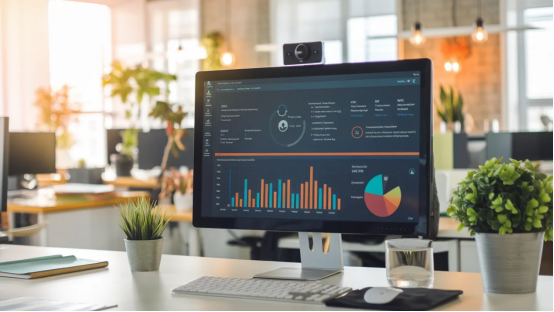The phenomenon of remote work has dramatically reshaped business operations, presenting unique challenges to both productivity and data security. As organizations navigate this evolving landscape, it’s crucial for them to address these challenges proactively to maintain efficiency and safeguard sensitive information. Understanding these dynamics is pivotal for the successful adoption of remote work strategies.

The Shift to Remote Work Post-Pandemic
The COVID-19 pandemic has catalyzed a remarkable transition to remote work, with a significant 57% of U.S. workers now reporting at least partial work-from-home arrangements. However, this transition brings forth a host of challenges; remote employees often grapple with distractions from family, roommates, or household chores, which can lead to feelings of isolation and decreased productivity. Additionally, businesses are now faced with the pressing dual concerns of maintaining productivity levels while simultaneously ensuring robust data security—a situation that necessitates a deeper exploration of the role of monitoring solutions within this new operational context.
Understanding Team Productivity Challenges
One of the primary hurdles of remote work is the dilution of oversight, which can hamper team productivity. Unlike traditional office environments, where supervision is more direct, remote settings often expose employees to various interruptions that hinder their concentration. For example, family members may unintentionally disrupt work hours, or household responsibilities may divert focus from essential tasks. This situation underscores a delicate balance that management must navigate; while granting employees their autonomy is vital, maintaining productivity levels also requires thoughtful interventions, highlighting the need for tools that can enhance monitoring and performance in this adapted landscape.
The Data Security Dilemma
The transition to remote work has heightened data security risks, with evidence pointing to a marked increase in data breaches due to insufficient monitoring. According to Cybersecurity Ventures, projected damages from cybercrime are anticipated to soar to $10.5 trillion annually by 2025, revealing a troubling trend in the threat landscape. Businesses are now at risk of facing severe financial repercussions, including fines and recovery costs, alongside potential damage to their reputation as customer trust erodes. Poor data management not only jeopardizes sensitive information but also undermines stakeholder confidence, establishing an urgent need for robust monitoring solutions that can mitigate these escalating threats.
Introducing Computer Monitoring Software
Computer monitoring software offers a comprehensive suite of tools specifically designed to track employee productivity and usage patterns in remote work settings. These solutions function by meticulously recording application usage, website visits, and even keystrokes, enabling employers to assess work habits accurately. By delivering insights into time management and task engagement, monitoring software can facilitate a dual focus: enhancing productivity and ensuring compliance with critical data security protocols. Furthermore, these tools play an essential role in protecting sensitive data by detecting potential unauthorized access or breaches, solidifying their status as a vital asset for organizations adapting to the demands of remote work.
Benefits of Implementing Monitoring Software
The adoption of monitoring software enhances businesses' insight into workforce performance, providing real-time assessments of productivity levels and employee engagement. The metrics generated by these tools not only streamline communication and workflows but also promote better collaboration among remote teams. By closely monitoring work habits, companies can bolster their data protection measures and ensure compliance with relevant regulations, thereby mitigating the risks associated with data breaches. This forward-thinking approach not only cultivates a secure work environment but also underpins business growth by optimizing operational processes and maintaining accountability among employees. In this age of shifting work dynamics, monitoring software unmistakably emerges as a crucial partner for organizations.
Overcoming Objections to Monitoring
While the importance of employee privacy cannot be overstated, the primary aim of monitoring software is to enhance productivity and safeguard sensitive data. It is vital to communicate the positive intent behind this technology, emphasizing the benefits for both the organization and its staff. Fostering transparency during implementation—through open discussions and feedback sessions—will create a supportive atmosphere, alleviating concerns about surveillance and reinforcing trust between management and employees.
Embracing the Future of Remote Work
In this dynamic era of remote work, integrating computer monitoring software is not just beneficial; it is essential for boosting productivity and ensuring data protection. Businesses must remain proactive in adopting these innovative tools to establish a secure and efficient remote work environment. By investing in monitoring solutions today, organizations can pave the way for sustainable growth and a promising future in remote operations.





